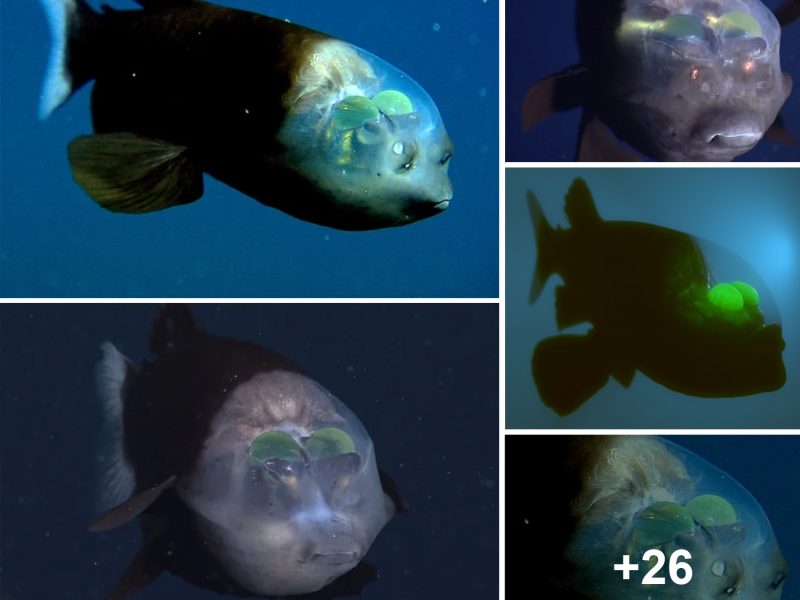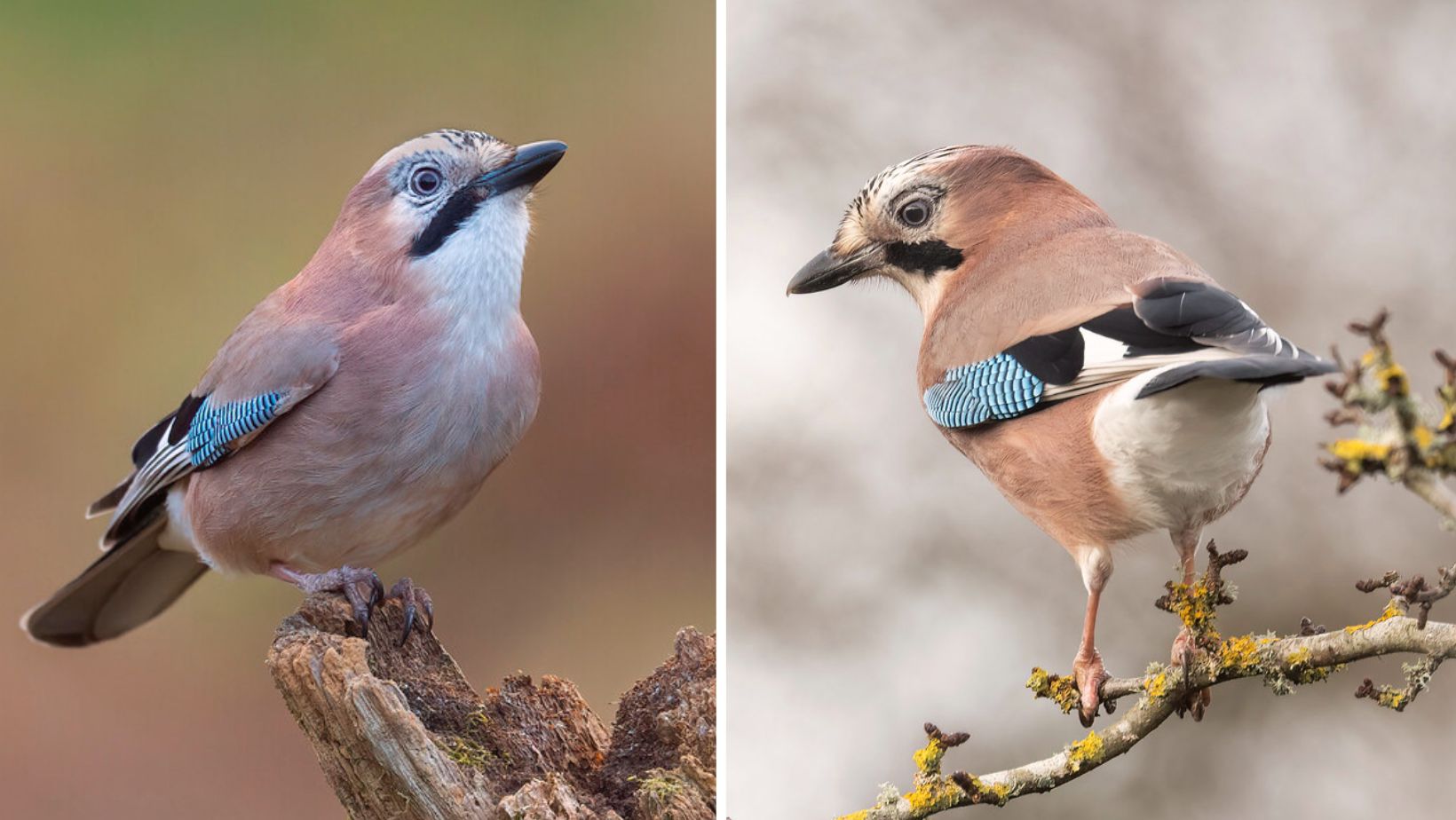
This bird is characterized by a thick black mustache, and it displays a distinct black-and-white wing pattern with a striking patch of blue on the shoulder.
Meet the Eurasian Jay
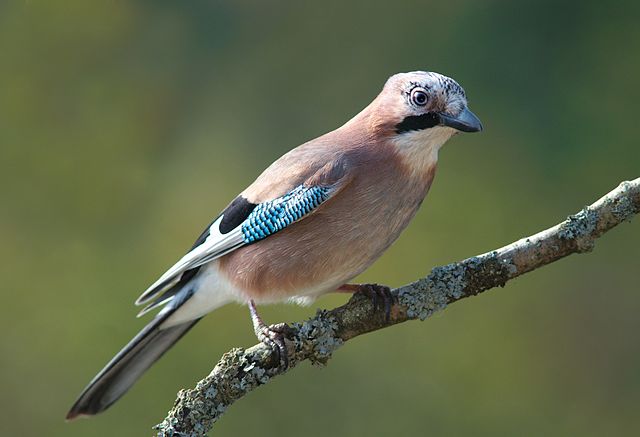
The Eurasian Jay (Garrulus glandarius), a beautiful member of the Corvidae family, can be easily identified by its bright blue wing patch. Both adult birds exhibit pinkish-grey to reddish-brown upperparts, and their rump and uppertail coverts are pure white, contrasting with a black tail. The upperwing displays rufous lesser and median coverts, along with bright blue finely barred black primary and outer great coverts. The rest of the upperwing features black to grey-black feathers with white bases or edges, creating a striking and conspicuous wing pattern during flight. The underparts resemble the mantle, while the vent and undertail coverts are white. On the head, there is a white streaked black crown, while the forehead, lores, eye’s area, chin, and throat are white. Notably, there is a prominent black malar stripe, and the nape and head sides are similar to the upperparts.
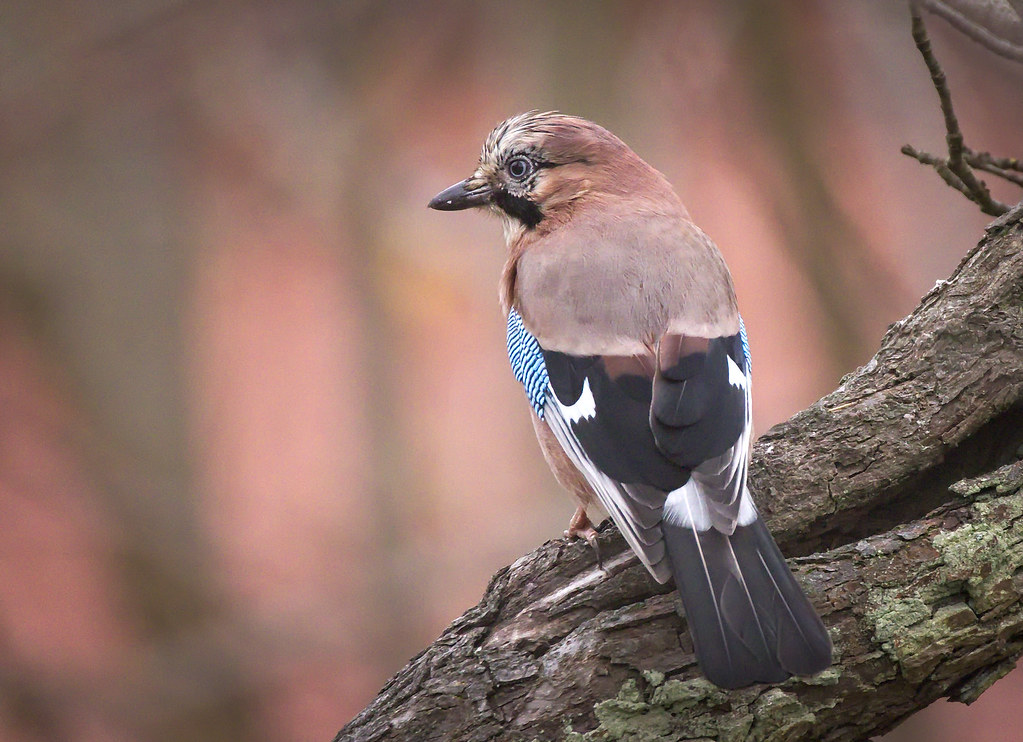
The strong bill is blackish, accompanied by whitish to buffy rictal bristles. The eyes are bluish-white, and the legs and feet are pinkish-brown.
Juvenile Eurasian Jays resemble adults but possess darker body plumage, a greyer bill, bluer eyes, and brighter legs. By the first autumn, young birds exhibit irregular black barring on the blue wing patch.
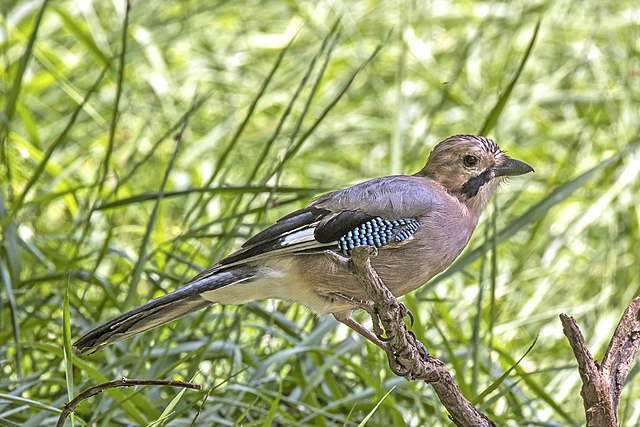
The Eurasian Jay is a woodland bird with an extensive range that stretches from western Europe and northwest Africa to the Indian subcontinent and continues further to the eastern seaboard of Asia and southeast Asia.
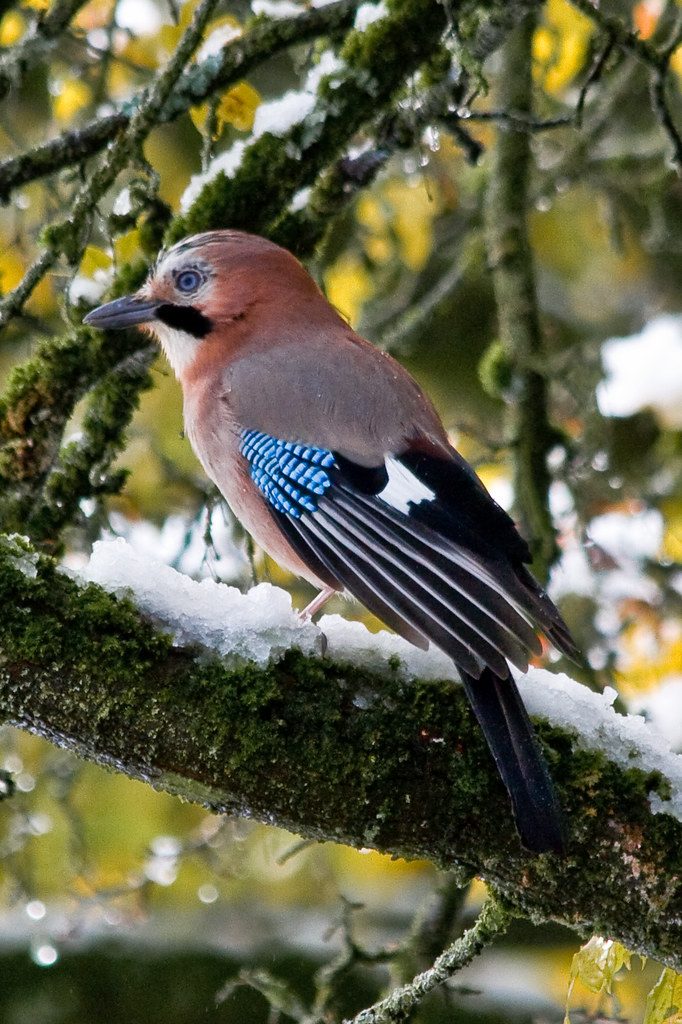
The Eurasian Jay frequents various woodlands and forests, with a preference for beech (Fagus), hornbeam (Carpinus), and oak (Quercus). It can be spotted in parks, large gardens, and orchards and may be found from sea-level up to 4000 meters of elevation.
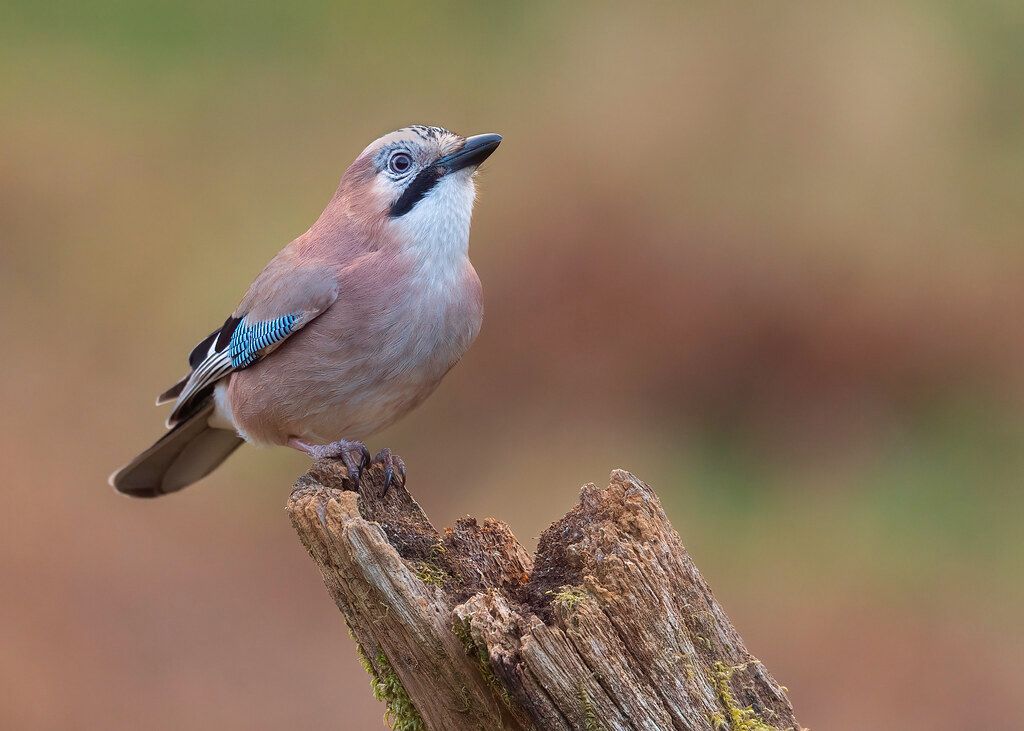
As for its behavior, the Eurasian Jay primarily feeds on invertebrates during the breeding and nesting seasons. It gleans from foliage in trees and, like other Corvidae, also preys on eggs and nestlings of other bird species. During autumn and winter, it consumes seeds, berries, chestnuts, and acorns, with the habit of caching acorns for later consumption.
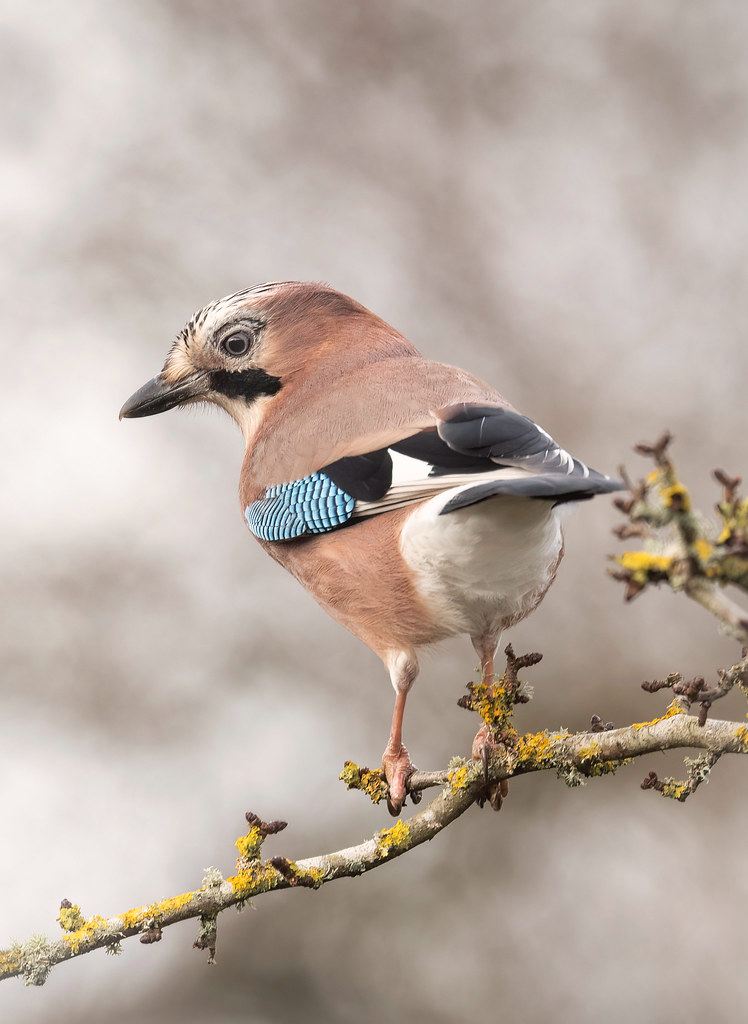
During aggressive displays, the male erects its crown and rump feathers. It becomes territorial during spring and chases away yearlings from the home range. The jays use different postures in various contexts, both in aggressive behavior and courtship displays. The Eurasian Jay constructs a well-constructed platform of twigs for its nest, which is situated in a fork near the center of a tree or lower crown. The female lays 3-10 eggs and incubates them alone for 16-19 days. Chicks are fed by both parents and fledge 19-23 days after hatching, remaining dependent on their parents for 7-8 weeks before being chased away from the home range. They can breed at one or two years of age.
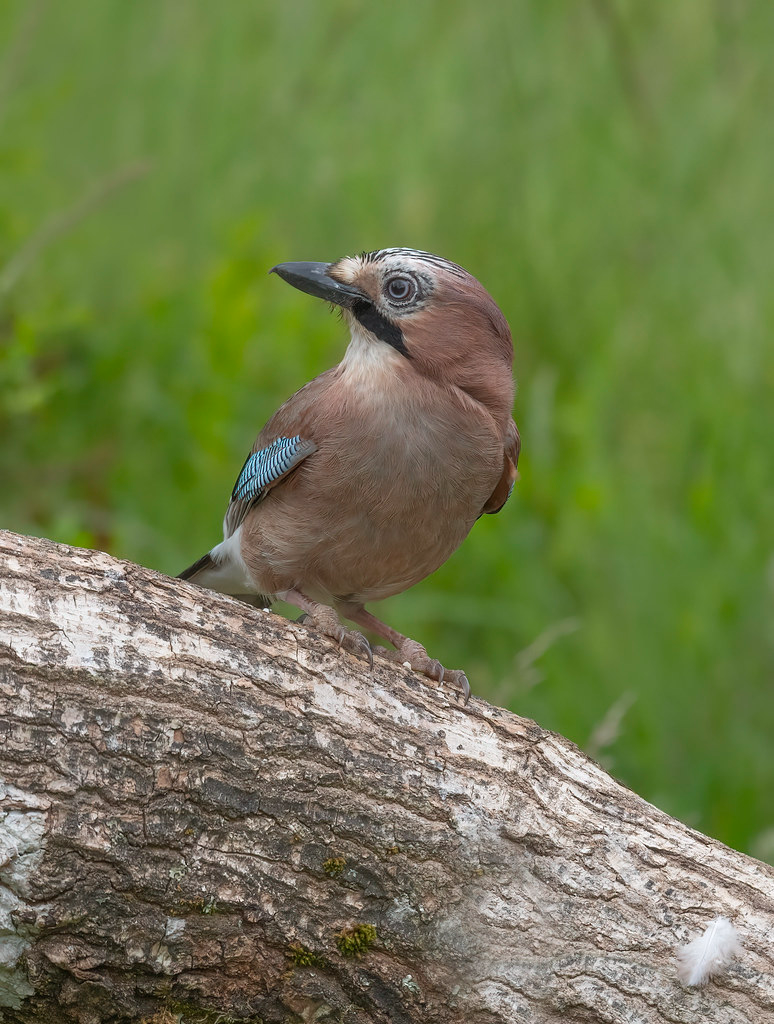
This bird is secretive and wary, often remaining hidden in dense foliage. It may be observed alone or in small family groups. During spring, unmated birds gather to attract a mate, while in late summer and autumn, they form large communal roosts.
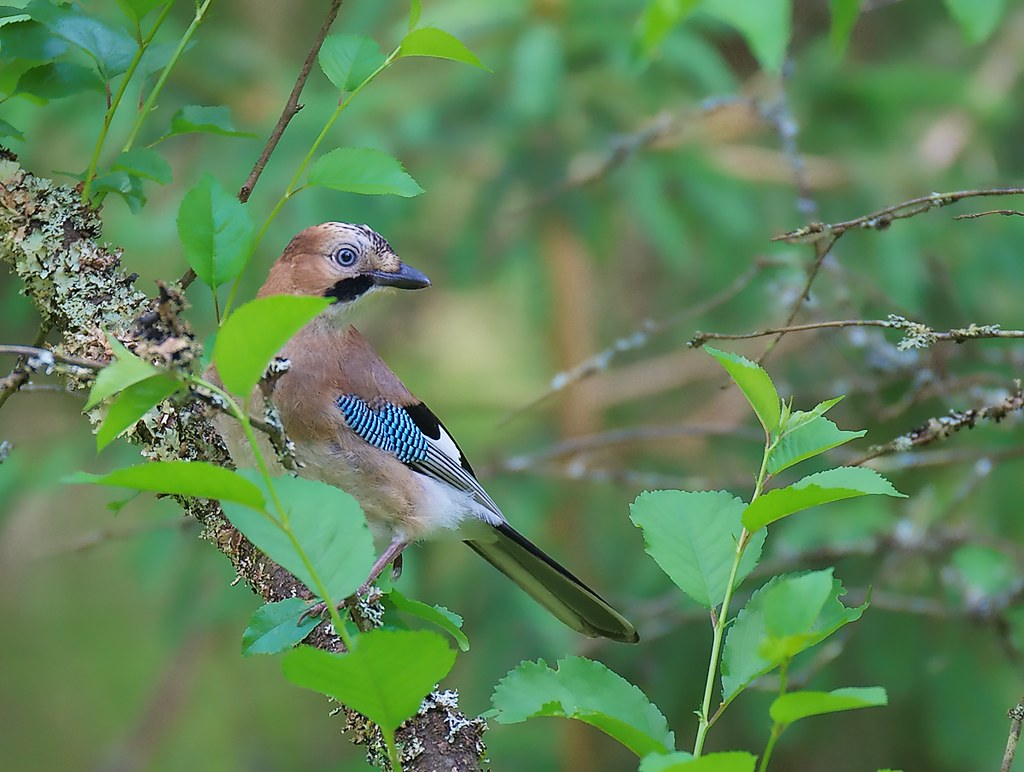
Overall, the Eurasian Jay is common or locally abundant, and its populations have been increasing and are currently stable. The species is not considered threatened at this time.
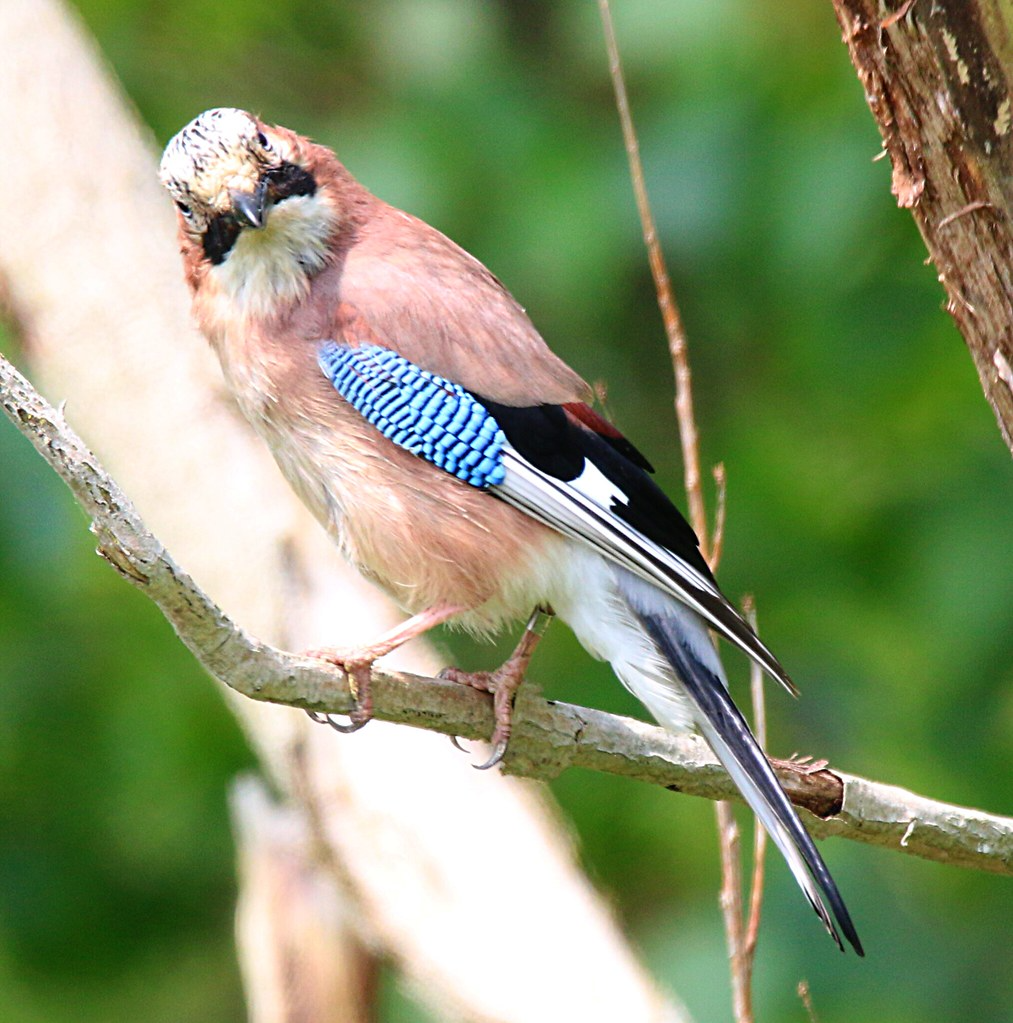
Listen to this bird right here:
This article uses material from Wikipedia.org which is licensed under the GNU Free Documentation License via Copyright Wikipedia. Images on this page are the sole property of the photographers (unless marked as Public Domain). Please read the license and or contact the photographers directly before using them for any purpose. Thank you all.
A Black Mask Bordered By A Dazzling Cerulean Crown Makes An Already Outstandingly Conspicuous Bird Stand Out That Much More!
Please SHARE this article with all your bird-loving friends and family.

